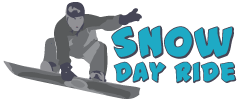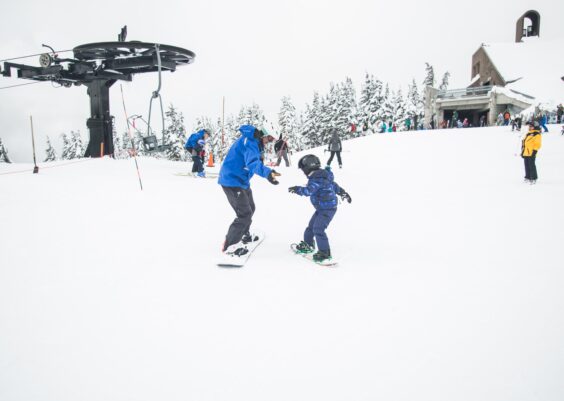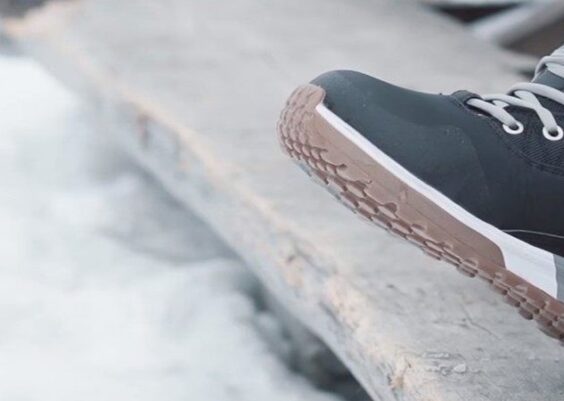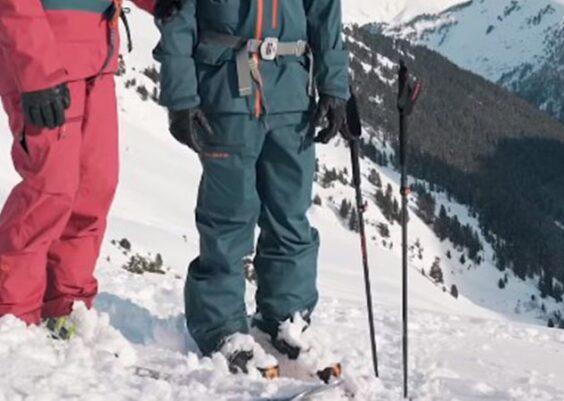Not all snowboard boots are alike in their flexibility or flex. In fact, they vary widely. Also, no particular flex degree’s perfect for everyone.
This makes the decision to buy a specific pair of snowboard shoes rather than any other depending on a variety of factors. But more about choosing between a more rigid and one that has more side-to-side flexibility or tip-to-tail.
Flex while choosing snowboards is crucial as it could keep you uncomfortable and prevent you from having all the fun of this sport.
When you’re out shopping for the right pair of best snowboard boots in 2022, ability level, style, foot shape, and price may be important considerations, but don’t ignore the role of flex while choosing.
Here are some parameters to help you get into the right pair of boots, based on the best flex:
The role of flex: If you’re at the store looking for snowboards, first check out its flex.
This refers to the amount of support it can give your feet and how soon it can pass on energy to your board. Usually, boot makers rate their products on a scale of 1-10 as follows:
1-2: Soft flex
3-4: Medium-to-soft flex
5-6: Medium flex
7-8: Medium-to-stiff flex
9-10: Stiff flex
One point to bear in mind is that the fit and user experience of a variety of boots varies from one model to another.
The stiffness or softness of a pair of boots will also depend vastly on the level of riding you want to do and your own proficiency at it.
The importance of snowboard flexibility:
In this sport, flexibility refers to a board’s ability to give under pressure, or flex. This feature varies from person to person and is therefore difficult to quantify, but manufacturers rate each snowboard model on a scale of 1 to 10, with 10 depicting the maximum flexibility. The flex rating you choose will depend on the kind of snowboarding you want to do. However, the flex design is usually of two distinct types–longitudinal or torsional.
Types of flex:
Flex or snowboard flexibility, is of two kinds, each with its own influence on the way your board performs.
- Longitudinal flex: This refers to the board’s flexibility from one tip of the board to the other. It takes on the pressure you exert on various board parts. Here, the flex could be even across its entire length, or it could be progressive, or more flexible at one end rather than the other.
- Torsional flex: This is integrated into the board across its width. If the boots you choose have high torsional flexibility, it means you can negotiate tight corners better and will be in better control over the snowboards when in terrain parks.
Classes of flex:
There are three classes of flex–soft, medium and stiff. Choose the one that’s right for you depending on your experience level, ability and preference.

- Soft flex: This is perfect for beginners, lightweight riders and freestylers. Softer board enables easier maneuvering of the board as it turns to slower speeds. However, if one rides aggressively, the board must no longer be soft but medium flex, as otherwise, it will result in loss of control.
- Medium flex: Snowboards with medium flex can be used for the largest range of riders. Medium flex boards are ideal for heavyweight beginners. These boards are stable and give better control as the rider moves on to steep terrain and high speed.
- Stiff flex: These boards suit backcountry or freeriders well, particularly if freeriding in large, vast, and practically empty snowy areas. These stiffer boards work well concerning high performance and speed in these areas. If you’re a free rider who enjoys a backcountry cruise, a stiff flex is perfect for you.
Which flex type is best for you?
What impact does flex actually have on your performance, and on that of your equipment?
A lot depends on the kind of rider you are and your personal tastes. It also depends on various factors, such as ability level, style, and body weight.
Let’s discuss them.

Ability Level
Beginner level:
You can control a soft flexing board easily and maneuver better too, making it ideal for beginners. However, it would be best for beginners to go medium-to-soft to prevent going overly soft.
Intermediate level:
For intermediate riders without a definite style, a medium-soft or medium flex would be ideal.
Style:
There are various styles to choose from that are conducive to soft, medium, and stiff flex. They are:
Freestyler and All Mountain that are best with a moderate to soft flex;
Street/jib boards go well with a soft flex and Free riders that go well with medium to stiff flex.
Bodyweight:
The longitudinal flex that suits you best depends mainly on your weight. But fortunately, manufacturers have come out with a weight range ideal for each snowboard length. Since the board’s length influences its flex, it would help you to go by this scale.
When making your choice, apart from your experience level and riding style, your bodyweight and personal preferences also play a significant role.
Of course, at the end of the day, there’s only one surefire way of testing out what’s ideal for you–by hitting the slopes with them.
Read Also: Coronavirus Impact On Snow Sports.
Last updated on October 8th, 2022 at 09:57 pm




